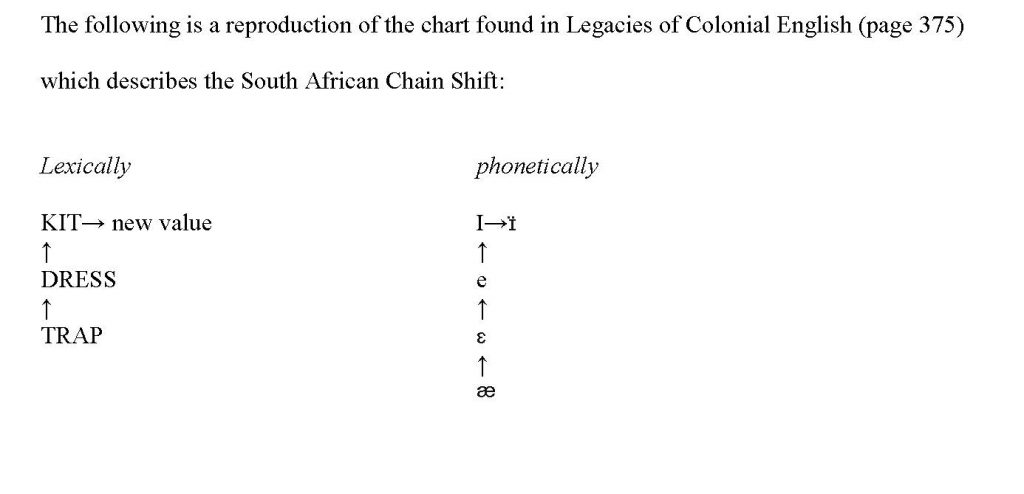Brian Wood is an English major and skiing addict studying at SOU. His two great loves are prose and powder.
Anyone who has found themselves on a ski lift listening to their neighbor describe how they[1] “sent it off a gnar cornie, pulled a triple-cork, just missed the death cookies, and stomped the landing with steeze” probably understands that skiers and snowboarders possess a unique lingo largely unintelligible to outsiders. As in many sports, technical terms and esoteric descriptions pepper the speech of snow sports enthusiasts, transforming their casual banter into a language sometimes barely recognizable as English. However, the linguistics of skiing and snowboarding differ from the majority of sports dialects in two key points.
First, while most American sports’ lingos consist primarily of English terms coined to more precisely describe sport-specific actions, skiing/snowboarding speech embodies an amalgamation of English, Norwegian, and German terminology. To master ski/snowboard jargon—and indeed, to comprehend almost any conversation on or about a ski slope—one must understand expressions derived from all three of these languages, as well as some French, Russian, and Finish additions. Second, the language of skiing and snowboarding departs from more uniform sports’ vernaculars in the cultural rift splitting the dialect. The counter-culture, punk- and gangster-influenced lingo of snowboarders—and recently, some young freestyle skiers—exists in overt rebellion to the ordered, establishmentarian speech characteristic of skiing. This ongoing cultural power-struggle, in addition to the dialect’s diverse linguistic roots, gives the lingo of skiing and snowboarding a depth, nuance, and complexity unparalleled by more single-faceted sports.
Just as the sport of skiing traces its earliest roots to stone paintings in Norway, Herbert R. Liedke recognizes in his paper “The Evolution of the Ski-Lingo in America” that, “Norwegian has contributed the fundamental ski terms to the American ski language” (Liedke 116). Likewise, in his essay “The Language of Skiers,” Horst Jarka affirms, “The first [skiing] terms to be found in dictionaries are, like the word ski itself, of Scandinavian origin: Christiania (long since Anglicized to Christie, -y), ski joring, skiöjoring, slalom, and telemark” (Jarka 202). Despite Norway’s responsibility for the existence of skiing lingo, however, American English speakers initially resisted the adaptation of Norwegian terms into their skiing lexicon.
Throughout the 1800s, Americans preferred to clumsily lump skis in with the English ‘snowshoes’ rather than accept the more precise Norwegian term (Liedke 117). Additionally, some American skiers, such as those in California’s Sierras in the 1860s and ‘70s, invented their own terms for the sport. Sierra skiers devised “such picturesque word creations for skis as: flip-flops, or wooden-wings or, simpler, snow-gliders and wooden sticks” (Liedke 117). These coinages, while commendable in their ingenuity, failed to make a lasting impact on ski lingo. Even after skiing’s popularity exploded going into the nineteenth century, spurring a burst of corporate attempts to articulate the sport to potential customers, the search for English ski terminology still yielded unsatisfying results. Exclusively English ski lingo proved clumsy and inefficient at best, misleading at worst: “an awkward and unskilled mode of describing skiing” (Liedke 117).
By the early 1900s, American skiers and ski marketers had begun to recognize the need to blend English ski expressions with the more accurate and elegant alternatives offered by European languages. Motivated by linguistic necessity, the excellence of German skiers and ski technology, and a growing number of ‘jet set’ American families with a taste for extravagant European ski vacations, English ski vocabulary began to give way to an influx of European—particularly German—terminology. Jarka asserts, “the German element in the language of skiers soon outweighed that of any other foreign language…used not only by American theoreticians and instructors but also by ski fans who want to show how much they are ‘in the know’ on the art of skiing.” He lists a variety of German words incorporated into English ski vocabulary, including ‘fallinie,’ ‘vorläufer,’ ‘girlande,’ ‘riesenslalom,’ ‘schneepflug,’ and ‘treppenschritt,’ which evolved into the English adaptations ‘fall line,’ ‘forerunner,’ ‘garland,’ ‘giant slalom,’ ‘snowplow,’ and ‘stair step’ (Jarka 202-203). These terms, Jarka explains, are literal translations of the German, or loan translations, as he refers to them. Other German words, such as ‘mogul’—a term for bumps caused by heavy skiing on a particular slope—interlaced with English ski lingo without any change at all.
With the adoption of extensive German terminology into skiers’ jargon, the skiing lingo began to develop into a unique mode of speech, a language distinct from Norwegian, German, and English. In addition to loan translation and verbatim usage of German, Norwegian, or French words, the sport produced words exclusive to the world of skiing. Jarka references ‘skiable,’ ‘skimanship,’ and ‘skithievery’ as examples of skiing lingo’s departure from any single language, and points out, “skiers have added new meanings to words like bathtub, bunny, doughnut, eggbeater, snowplow, T-bar, and tow, and coined new terms like dope slope and slope fashions” (Jarka 204). Additionally, Liedke demonstrates skiing lingo’s burgeoning unintelligibility to non-skiers of any language or nation, quoting a ski reporter from the New York Times as proclaiming, “Such expressions as ‘geländesprungs, schusses, slalom, tailwagging and langlaufing’ are heard and you realize that, in addition to learning how to ski, you must learn to speak a strange language” (Liedke 120). As both Jarka and Liedke recognized, the language of skiing had outgrown the constraints of a single place or national identity, evolving into an entity tied exclusively to the experience, the mountain, and the exhilaration of hurtling downhill over snow.
Mirroring the journey of ski lingo into linguistic distinction and legitimacy, skiing also developed a unique culture: one stepped in affluence, prestige, and exclusivity. In stark difference from the sport’s Norwegian genesis as a practical and universally-accessible means of transportation, skiing in the 1900s on catered almost entirely to the upper classes, and the language of skiing expressed this elitism. The practical impossibility of skiing on a budget, coupled with the insidious classism prevalent in ‘ski biz’ advertising, cultivated a strong “snob appeal of…skier’s language” (Jarka 203). Skier speech became a privileged dialect, a syntactical assertion of wealth and cultural capital, and skiers utilized the complexity and multi-lingual nature of their lingo as a barrier to outsiders of lower class or economic means.
Even for those accepted into the prestigious inner circle of skiing lingo, slope speech tended toward a strong focus on order, adapting driving and traffic terminology to stifle freedom of expression or recklessness in skiing. While many of these terms inevitably stemmed from necessity as the skyrocketing popularity of skiing led to increasingly crowded slopes, some phrases—such as the epithets utilized to chastise and demonize reckless or aggressive skiers—demonstrated a clear dedication to structure, principle, and restraint on the mountain. Jarka demonstrates the antipathy faced by skiers who resisted the order imposed on their sport, listing various punitive labels imposed on high-speed skiers: ‘schussboomers,’ ‘hot rod skiers,’ and ‘trail hogs’ (Jarka 204). Additionally, he references an article which, in its title, posits the question “Can Schussboomers be stopped?” As do the derogatory terms of most cultures and languages, these labels for reckless skiers demonstrate the values of skiing lingo through the language’s choice of opponent. By vilifying those (usually younger) skiers eager to push the boundaries of the sport, the skiing language of the 1900s embodied a foundation of support for social and linguistic establishment—a support that grew so pervasive as to invite almost inevitable rebellion.
The revolution against skiing’s establishment culture emerged with the introduction of snowboarding: a sport which, while not significantly different from skiing in a technical sense (skiers slide down snow on two planks, snowboarders on one), embodied skiing’s collective cultural Id. While skiing society supported social values of order structured to maintain the status que, snowboarding championed individual expression, unapologetic pursuit of adrenaline, and strong counter-culture ideologies. In her article “What Is So Punk About Snowboarding?,” Rebecca Heino asserts, “snowboarding is aligned closely with surfing culture…Both blend the creativity of movement with the beauty of nature and the thrill of vertigo, a flirting with danger” (Heino 182). Heino continues, “Snowboarding represented a resistance to materialism and separation of mind and body, while embracing a wholistic view of nature that was similar to Zen and Buddhism” (Heino 183). This stark conflict in worldviews gave snowboarding the fuel to instigate a linguistic revolution.
In order to differentiate from mainstream ski culture, snowboarding lingo drew inspiration from other counter-culture movements. Heino explains, “Instead of the snowboarders aligning themselves with the dominant ski culture, they presented their cultural roots in surfing, skateboarding, and the ‘gangsta’” (Heino 178), and this cultural rift led “Snowboarders [to clash] with skiers in style of dress and body presentation, equipment, and language” (Heino 178). Perhaps the most fundamental linguistic divergence of snowboard culture from ski culture arises in the description of the sport itself. As Heino addresses, snowboarders did not ‘ski,’ but rather adopted the surfing term ‘shred’ into a mountain context (Heino 180). Heino elaborates, “Snowboarding appropriated other words from skateboarding and surfing such as goofy footed (riding with your right foot in front) and sick (excellent, as in ‘That was sick air’)” (Heino 181), resulting in a snowboarding lingo far more easily recognizable to the youth counter-culture of surf and skate groups than even the most linguistically well-versed mainstream skier.
In addition to surf and skate vocabulary, snowboarding also derived strong linguistic influence from gangster culture. As Holly Thorpe observes in her article “Embodied Boarders: Snowboarding, Status, and Style,” “The snowboarding media blatantly appropriate this gangster lingo, writing text in colloquial language and terminology that only gangsters and snowboarders understand” (Thorpe 189). Thorpe offers an example in Transworld Snowboarding, a popular snowboarding magazine and website which “writes to ‘all you fresh-ass mofos out there’” (Thorpe 189).
The incorporation of gangster lingo into the snowboarding lexicon differs from that of surf and skate culture, however, in that gangster terminology offers virtually no practical use in describing the act of snowboarding. Instead, snowboarders draw an exclusively stylistic and ideological connection between their sport and gangster culture, appropriating gangster terms to synonymize the snowboarding lifestyle with aggression, rebelliousness, and masculinity, despite the lack of physical or technological similarity. As Kristin L. Anderson affirms in her piece “Snowboarding: The Construction of Gender in an Emerging Sport,” snowboarding’s gangster speech is both a cultural statement and an intimidation tactic. Anderson argues, “Because the physical practice of snowboarding does not require obvious strength, violence, and aggression, snowboarders must use other factors, such as language, fashion, and ‘attitude,’ in creating a masculine identity…Like the African American men who create a ‘cool pose’ masculinity” (Anderson 69). Therefore, what skiing lingo accomplishes covertly through the underlying themes of prestige, exclusivity, and class distinction associated with the sport’s European technical terms, snowboarding language achieves more bluntly, and in the opposite direction, though gangster lingo. Both skiing and snowboarding adopt specific linguistic and dialectic terms to send a cultural message; snowboarding, true to form, simply refuses to apologize for doing so.
Despite a foundation of antipathy, however, skiing and snowboarding dialects have increasingly begun to merge as snowboarding gains cultural acceptance and joins the ‘mainstream’—a phenomenon highlighted by snowboarding’s presence in the Olympics, and one which has inspired some counter-culture devotees to strap into the once-maligned skis. Heino quotes the Transworld Snowboarding’s managing editor as admitting, “Skiing is punk again. The opposite of what convention is” (Heino 185). Consequently, terms once exclusive to one lingo or the other are being shared: skiers can now ‘shred the pow’; snowboarders can race ‘slalom’ and ride ‘moguls.’ The two once-distinct languages are gradually merging into one. Whatever the future of ski and snowboard speech, however, these lingos have achieved remarkable complexity, originality, and cultural relevance for two dialects founded around skidding down snow on planks, and they show no signs of slowing down.
Works Cited
Anderson, Kristin L. “Snowboarding: The Construction of Gender in an Emerging Sport.” Sage Journal of Sport and Social Issues, vol. 23, no. 1, 1999, pp. 55-79. http://journals.sagepub.com/doi/abs/10.1177/0193723599231005
Heino, Rebecca. “What is So Punk about Snowboarding?” Sage Journal of Sport and Social Issues, vol. 24, no. 2, 2000, pp. 176-191, doi.org/10.1177/0193723500242005. Accessed 19 Feb. 2018.
Jarka, Horst. “The Language of Skiers.” American Speech, vol. 38, no. 3, 1963, pp. 202–208. JSTOR, www.jstor.org/stable/454100. Accessed 18 Feb. 2018.
Liedke, Herbert R. “The Evolution of the Ski-Lingo in America.” Monatshefte Für Deutschen Unterricht, vol. 35, no. 3/4, 1943, pp. 116–124. JSTOR, www.jstor.org/stable/30169965. Accessed 19 Feb. 2018
Thorpe, Holly. “Embodied Boarders: Snowboarding, Status, and Style.” Waikato Journal of Education, vol. 10, 2004, pp. 181-201. http://www.wje.org.nz/index.php/WJE/article/view/339. Accessed 19 Feb. 2018
-
I use the singular ‘they’ intentionally in this essay in an attempt to avoid gendered speech. ↑

 Follow
Follow

